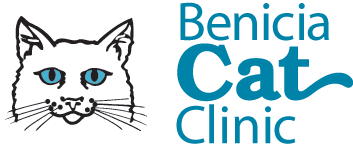Educational Articles
-
Salicylic acid topical (brand name Solva-Ker®, BioSeb®, Cerasoothe® SA, others) is an antimicrobial and antipruritic (anti-itching) agent used in the treatment of seborrheic (dry or greasy dandruff) disorders in cats, dogs, and other animals. It may be specially compounded and/or combined into a formulation with other medications. It comes in cream, gel, ointment, and shampoo forms.
-
Salivary gland tumors are rare in dogs and cats. The mandibular and parotid glands are most commonly affected. Signs include swelling of the upper neck or ear base, halitosis, anorexia, weight loss, difficulty eating, pain, and lethargy. The treatment of choice is usually surgical excision. If complete excision is not possible, adjunct radiation therapy may be pursued.
-
A salivary mucocele is an accumulation of saliva that has leaked from an injured salivary gland or duct. Some mucoceles cause swelling of the face and neck, while others interfere with a dog’s ability to swallow or breathe normally. Treatment typically requires surgical removal of the affected salivary gland(s).
-
A cat’s claws are an integral part of their anatomy. Scratching behaviors are normal and serve many purposes, yet cats can cause damage and injury with their claws. By gaining an understanding of the reason that your cat uses her claws, you can provide her with alternative outlets and prevent her from causing damage to your property.
-
Seboliance (brand name Douxo®S3 SEB) is a natural extract from the pomegranate plant (Punica granatum) used to help control dandruff, reduce odor, and help hydrate dry skin in cats and dogs. Seboliance may be part of a combination product containing ophytrium. Seboliance comes in mousse and shampoo forms.
-
Seborrhea or seborrheic dermatitis is a skin disorder in which the sebaceous glands produce an excessive amount of sebum causing scaly, flaky, itchy, and red skin. It typically affects the back, face, and flanks and may be worse in areas with skin folds such as the feet, neck, lips, armpits, thighs, and underside. Seborrhea can be a primary or secondary disease and is diagnosed using multiple tests to determine the underlying cause. Treatment or management depends on the cause
-
A seizure is a sudden surge in the electrical activity of the brain causing signs such as twitching, shaking, tremors, convulsions, and/or spasms. Epilepsy is used to describe repeated episodes of seizures. With epilepsy, the seizures can be single or may occur in clusters, and they can be infrequent and unpredictable or occur at regular intervals. Since many different diseases can lead to seizures, it is important to perform diagnostic tests to investigate the underlying cause of the seizures. Treatment of seizures in the cat depends on the nature of the underlying disease.
-
Selemectin is used topically on the skin to treat various parasites, both on and off label. Side effects are rare but may include hair loss at application site, gastrointestinal upset, skin reactions, or neurologic signs. Use with caution in sick or underweight pets, or dogs with the MDR1 mutation. If a negative reaction occurs, please call your veterinary office.
-
Selamectin + sarolaner is used topically on the skin to treat various parasites, both on and off-label, and prevent heartworm in cats. Side effects are rare but may include hair loss at the application site, gastrointestinal upset, skin reactions, or neurologic signs. It should be used with caution in sick or underweight cats. If a negative reaction occurs, please call your veterinary office.
-
Selegiline is typically given by mouth and is used off and on label to treat signs due to cognitive dysfunction syndrome, pituitary dependent Cushing’s disease, anxiety and certain phobias. Side effects may include vomiting, diarrhea, drooling, lack of appetite, and behavioral changes. Do not use in pets that are allergic to it, are aggressive, or in pets receiving other MAOIs, including certain tick collars. If a negative reaction occurs, please call your veterinary office.

